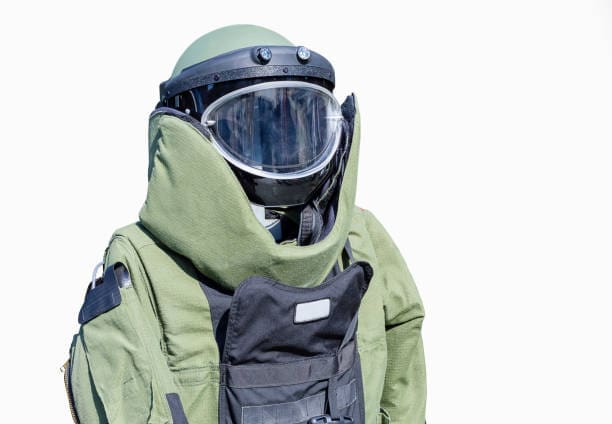As AI and IoT revolutionize the world, smart textile, also called technical textile, is growing faster. Many textile manufacturers and fashion designers are considering integrating these technologies in the products they sell to consumers. Currently, they are used on an industrial scale, but in the future, they are likely to become a part of routine and daily wear.
The smart textile industry consists of many items, technologies, and textiles that can sometimes be difficult to comprehend or select the ideal product. As the industry advances and distributes its products globally, it is necessary to understand certain fundamental concepts about these products.
The most popular technical textile
There are over 15 categories of technical textiles, but these are the most popular ones.
Mobile textile
These are ideal for the transportation industry to protect people during transportation. The common applications include car airbags, seat belts, sun visions, etc. They are suitable for managing temperatures, protecting passengers from sudden motion changes, and preventing certain body parts from harm.
Companies such as Erez Therm are currently using different technical textiles for manufacturing products for the marine and recreation industries.

Protective textile
These textiles are ideal for protecting users from injuries and harm. They are suitable for service members such as fire department, search and rescue, UV and radiation-related research, military, police, etc. They are made from materials such as high-performance polythene to safeguard those putting them on.

Sports textile
These are ideal for those in the sports and athletics industry. The main goal is to ensure the users are comfortable and safe. The latest examples include Velcro used in athletic shoes. They also have anti-heating and chaffing elements to boost comfort. The textile can also include other vital technology to monitor athletes’ body vitals.
Medical textiles
These fabrics offer the best hygiene and healthcare goals. They use standard fibers such as cotton, silk, polyester, etc., which contain technologies such as nanoparticles to deliver drugs to specific body parts. They are critical in manufacturing smart gowns which can easily monitor patient vitals such as pulse and cardiac activities.
Electronic textile
The e-textiles are suitable for electronics such as sensors, batteries, LEDs, and computing fabrics. They combine textile and conductive materials to generate the desired effects, such as light and color changes. Current applications include smart bikinis, which have waterproof and heat sensors to inform you when you have stayed in the heat for so long.

Industrial applications of technical textiles
There are extensive uses of technical textiles in the industry today. Their application varies based on the industry needs and the technologies ideal for these industries. The common applications include:
- Recreation: The recreational uses cover sports and recreational garments. They are suitable for making camping gear, making zip lining ropes, and sports nets.
- Occupational and non-occupational safety. They consist of PPEs, reflective vets, military uniforms, prison uniforms, etc.
- Aviation, automotive, and marine applications offer safety, boost filtration, aeration, etc. In aviation, they can tolerate high temperatures and environmental changes. In automotive, they resist stains, protect passengers and absorb moisture and chemicals. In the marine industry, they withstand the effects of harsh salty water, sun, and other environmental issues.
- Medical and healthcare applications: They are ideal for the staff and patients. They facilitate recovery and safety since they are bacteria resistant and can resist radiation or repel moisture. Examples include cubicle curtains, wound dressings, IV bags, and grafting materials.

Factors to consider when selecting a technical textile
- The use: the first process is to consider the needs you want to address using the textile. For instance, if you want to make sportswear to monitor athletes’ health and make them comfortable and safe, you can use medical, sports, occupational safety, and other textiles.
- The technology: You also select based on the embedded technology. There are different textiles within the discussed classification; hence selection may be a challenge. Select one with the best tech to address your needs.
The technologies embedded in these textiles vary based on the application industry and the anticipated benefits. However, they sometimes share similar technologies, such as using sensors in all the textiles to detect environmental changes.
The technologies can also connect to other systems such as mobile phones, computers, etc. They extensively use IoT and AI to boost their benefits to the users. The finer and more advanced technologies integrated will depend on the area of use.
- Integration of different textiles: It is ideal to select a textile that combines additional functionality. This will help you address multiple issues simultaneously, such as keeping you safe, boosting air quality, and eliminating moisture.
Material dimensions when selecting a technical textile
While settling on the decision of technical textile, the material matters a lot, and you need to consider the material dimension before focusing on the technology embedded. The materials used should meet the following characteristics. The traits to consider will also depend on the industry of application.
- High strength and modulus
- High stability
- Durable and flexible
- Windproof
- Lightweight and low bulk
- Water repellent or waterproof
- Heat and flame resistant
- Shock resistance
- Permeable or breathable
- Good elasticity
- Faster drying
- The technologies embedded in the textiles
Conclusion
While selecting the ideal technical textile, you should consider particular factors such as technology, materials, and the intended use. These considerations will help you choose the best textile and fibers for the desired industry. You can select from various electronic, medical, sports, recreation, protective textiles, etc.
